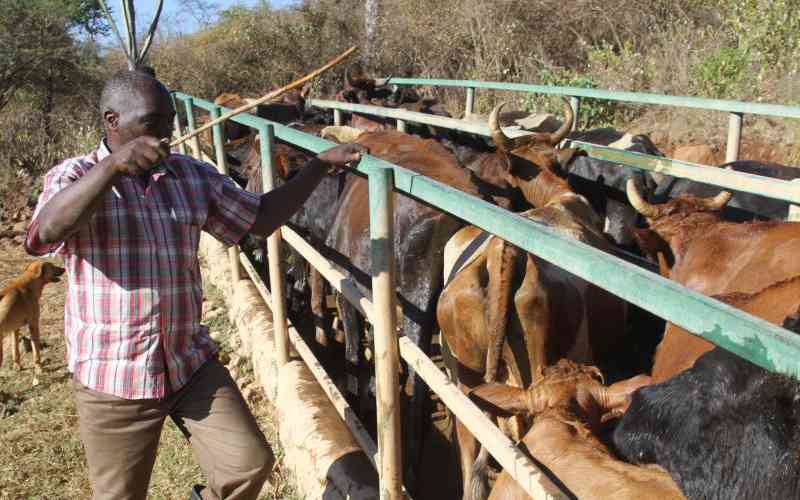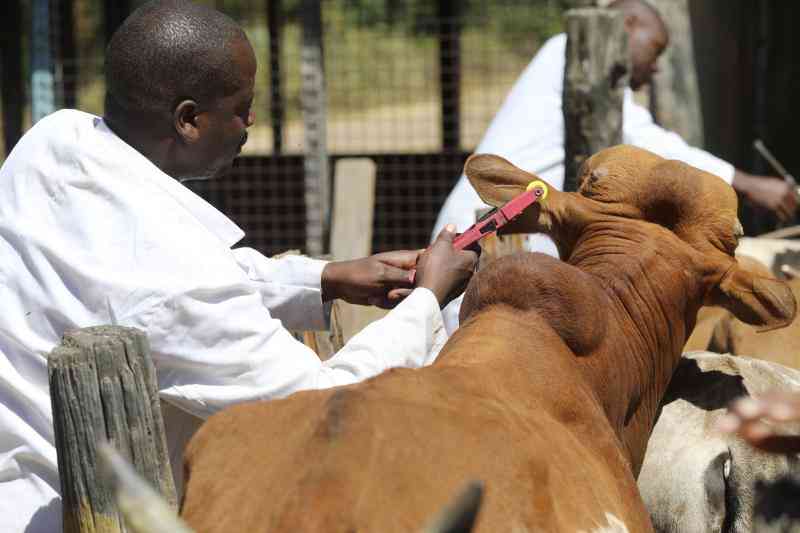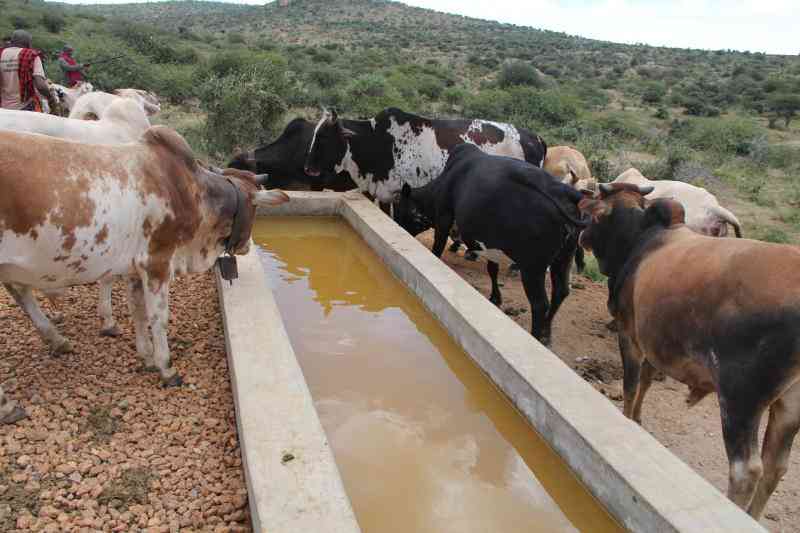As middle income households increase in our society, more people afford basic needs and food in particular.
Milk being an important component of food, more households are including it in their budgets.
Milk is becoming a favourite of many as people become health conscious, doing their best to avoid non-communicable diseases like cancers, obesity, cardiovascular diseases among others caused by eating unhealthy diets.
With that information in mind, every aspiring dairy farmer should strive to produce safe, healthy milk.
Dairy herd health
Dairy herd health entails a well defined programme implemented by the farmer and his/her veterinary surgeon to ensure profitability of any farming enterprise.
This programme employs a combination of biosecurity, vaccination and diagnostics to determine the health status of a herd.
The health profile of a dairy herd will determine its success in terms of milk production, reproductive status and growth rates of calves and heifers.
This can only be unlocked when farmers focus on prevention of animal diseases and proper nutrition than on actual disease management.
Today, dairy production is characterised by desire to run a profitable dairy herd for sustainable production.
This depends on making sound business decisions, proper financial management and provision of optimum veterinary care to the animals depending on their individual needs.
In an ideal dairy farming set up, a farmer should achieve the following, 22 to 24 months at first calving and one calf per cow per year.
After calving, an animal should conceive latest at 125 days, lactate for 305 days and be dried for between 45 – 65 days.
To achieve this aspects, a farmer should put in place sound measures to ensure production is optimum. The components of herd health include:
Nutritional management
Stay informed. Subscribe to our newsletter
Nutritional management is the most important determinant of dairy herd productivity. The relationship between nutrition and productivity begins at birth.
Many common production –limiting diseases of adult cattle are caused at least in part by errors in nutritional management.
Dairy herds reporting mean age at first calving of <27months and mean body weights at calving of >545kg (Friesians) have been shown to have higher mean milk production.
The dairy feeding system must be designed to deliver necessary nutrients to each cow at the correct stage of lactation to maintain optimum productivity.
Proper nutrition ensures elimination of metabolic diseases such as milk fever, displaced abomasums, mastitis, laminitis, acidosis and bloating.
Reproductive management
Reproductive management is the key for optimum productivity in dairy herds.
Lower reproduction indices means a farm cannot achieve the said targets. Reproductive disorders are the main reason for premature culling as animals with reproductive disorders cannot be profitable in any agribusiness venture.
Some farmers rely on standard bulls for mating while others on semen.
All bulls should undergo a breeding soundness examination before the breeding season.
Reproductive technologies such as estrus synchronization and embryo transfer can be applied in bigger farms to ensure high production potentials. Heifers are the future of any dairy herd and a lot should be invested to ensure the production is either maintained or increased in their lactation.
Disease management
In a properly designed herd, health program, disease prevention should be prioritised as opposed to waiting for disease outbreaks then you act. Nearly half of diseases that affect herds today are manageable by routine vaccinations.
Such diseases include foot and mouth disease, anthrax and black quarter (Blanthrax), east coast fever, Lumpy skin disease among others. These diseases reduce herd productivity, lead to losses due to animal deaths and lead to poor quality of the milk not to mention the threat posed by drug resistance and residues in meat and milk.
Gastrointestinal worms are considered unimportant in animals but they are very detrimental to production and wellness of any animal.
They lead to stress and ill health thus affecting milk production and weight gain.
Mastitis is also a disease of concern to every dairy farmer because it affects animal health, milk quality and quantity.
Proper mastitis control protocols can lead to profitability.
This include milking hygiene and proper biosecurity, ensuring you observe the dry period and also instituting the dry cow therapy in all dry cows which greatly helps reduce incidences of mastitis.
When livestock diseases are prevented, it helps reduce the amounts of drugs used on animals which contribute to cancers and other diseases.
Executing a herd health routine
A successful herd health program is a two way traffic. It needs a qualified, enthusiastic, dedicated, and well informed veterinary surgeon.
Also key in this chain is a farmer or a farm manager who should be willing to listen and implement all herd health protocols employed by his /her vet.
The farmer should be able to keep all farm records such as financial, production, reproduction and health records.
High yielding
In such an arrangement, the vet and the farmer plan scheduled visits to the farm regularly. The frequency of the visits depends on the size of the farm and the requirements.
During these visits, routine vaccinations are done, together with health and reproductive examinations which ensure a disease-free herd.
During such visits, individual animals can be examined after calving or for any signs of disease.
Implementing a herd health program should be the way to go for every serious dairy, beef or sheep and goat farmer who wants to raise healthy animals that are high yielding.
 The Standard Group Plc is a
multi-media organization with investments in media platforms spanning newspaper
print operations, television, radio broadcasting, digital and online services. The
Standard Group is recognized as a leading multi-media house in Kenya with a key
influence in matters of national and international interest.
The Standard Group Plc is a
multi-media organization with investments in media platforms spanning newspaper
print operations, television, radio broadcasting, digital and online services. The
Standard Group is recognized as a leading multi-media house in Kenya with a key
influence in matters of national and international interest.
 The Standard Group Plc is a
multi-media organization with investments in media platforms spanning newspaper
print operations, television, radio broadcasting, digital and online services. The
Standard Group is recognized as a leading multi-media house in Kenya with a key
influence in matters of national and international interest.
The Standard Group Plc is a
multi-media organization with investments in media platforms spanning newspaper
print operations, television, radio broadcasting, digital and online services. The
Standard Group is recognized as a leading multi-media house in Kenya with a key
influence in matters of national and international interest.








